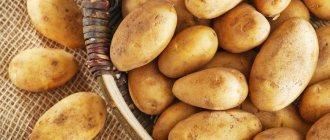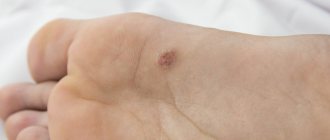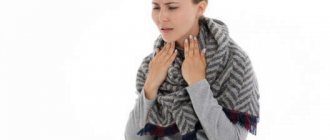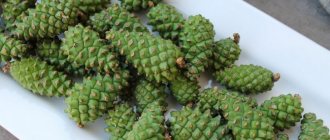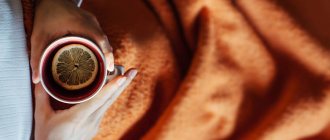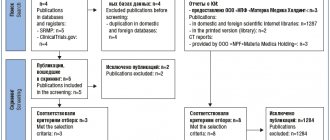Classification of bronchial asthma
There are several classifications of the disease. Depending on the causes of occurrence, the following types of bronchial asthma are distinguished:
- endogenous – attacks occur as a result of physical exertion, stress, infectious diseases;
- exogenous - asthmatic attacks are caused by the entry of allergens from the outside into the respiratory tract (dust mites, plant pollen, household dust, mold, animal hair);
- mixed – caused by the influence of both internal and external factors.
Based on severity, there are 4 stages of the disease:
- Intermittent asthma . The attacks are short-lived and occur no more than once a week. Night attacks occur no more than once every two weeks.
- Mild persistent asthma . Attacks occur more often than once a week, but no more than once a day. The patient feels weak, physical activity decreases, and sleep is disturbed.
- Moderate persistent asthma . Attacks occur almost every day. Night attacks occur more than once a week.
- Severe persistent asthma . The patient complains of daily asthma attacks, night attacks occur several times a week.
Badger fat
Badger fat is considered one of the best folk remedies specifically for the treatment of pulmonary diseases.
Once ingested, the amount of fat absorbed is almost 100%. All the reserves that the badger has accumulated have a tremendous healing effect on both adults and children.
Adults can consume fat even in its pure form, although it is not very pleasant. You can use various sweeteners. It is useful for children to rub their chest, ankles and back - the fat will gradually be absorbed, releasing useful substances, and the child will not have to eat unpleasant medicine.
Beneficial effects of badger fat:
- Strengthening immunity.
- Warming effect when lubricating the body.
- The work of the bronchial glands increases.
- Rich content of vitamins and microelements (A, B, E, unsaturated fatty acids).
- Bactericidal effect.
Important: some people are allergic to badger fat. Before taking it, be sure to visit an allergist. External use involves rubbing the entire body with badger fat - do not do this only in the heart area
Then you need to wrap yourself up warmly and sit like that for 2-3 hours.
External use is reduced to rubbing the entire body with badger fat - do not do this only in the heart area. Then you need to wrap yourself up warmly and sit like that for 2-3 hours.
The course lasts from 14 days to a month. It all depends on the degree of the disease
Therefore, it is important to consult a doctor before use. After the end of the period for rubbing, it is important to take a break for a month, and then repeat it all over again.
This will help maximize the impact of nutrients.
For a child, when taken orally, you can mix the fat with jam or his favorite treat, or simply sweeten it
When using jam, it is better to pay attention to varieties such as currants - otherwise too sweet jam coupled with fat can cause even greater disgust
Recipe:
- 1 tbsp. aloe, finely chopped, or preferably ground in a blender.
- 1.5 tbsp badger fat.
- 1 tsp cognac
- 2 tsp cocoa.
- Mix.
- Take in the morning or evening, 1 time, the entire portion.
Causes of bronchial asthma
The disease is caused by the fact that under the influence of various irritants, hyperactivity of the bronchi develops, which leads to a narrowing of their lumen, swelling, and excess mucus production.
All factors that can trigger the development of asthma are divided into several groups:
- Internal factors:
- hereditary predisposition – the presence of any form of allergy or bronchial asthma in close relatives increases the risk of developing the disease;
- gender – in adulthood, asthma is more common in women; in childhood, boys are more likely to get sick;
- obesity.
- External factors(allergens):
- dust;
- pollen;
- animal hair;
- mold;
- bird feathers;
- food products (most often dairy products, chocolate, citrus fruits, fish, nuts);
- some medications (antibiotics, enzymes and a number of others)
- Triggers. These are factors that can cause bronchospasm. These include:
- ARVI;
- tobacco smoke;
- climate features (cold air, dry climate);
- bad ecology;
- regular contact of the patient with household chemicals (perfumes, powders, cleaning products).
Features of the pathology
Bronchial asthma is a chronic recurrent lesion of the respiratory system associated with impaired bronchial obstruction, which can be caused by immunological and non-immunological (nonspecific) etiological mechanisms. The main symptom of asthma is asthma attacks. In this case, respiratory failure is caused by bronchial spasms, swelling of the mucous membrane or hypertrophied secretory function of the mucous glands.
Bronchial asthma can develop in both adults and children of different ages. According to the mechanism of formation, atopic (allergic), infection-dependent, autoimmune, dyshormonal and neuropsychic types are distinguished. The main provoking external reasons:
- allergens;
- infections;
- stress;
- physical overload;
- climatic conditions;
- polluted atmosphere;
- tobacco smoke and smoke from fires;
- some medications.
Among the internal influencing factors are disorders of the immune and endocrine systems, bronchial pathologies of a congenital and acquired nature. Allergic asthma is quite often observed, caused by the body's reaction to house dust, tobacco smoke, animal hair, detergents, cosmetics, and food.
Symptoms of bronchial asthma
The main clinical signs of the disease are:
- shortness of breath or a feeling of suffocation during physical activity or at rest - an attack develops suddenly, under the influence of provoking factors (for example, a sharp change in ambient temperature, inhalation of pollen);
- shallow breathing with prolonged exhalation;
- attacks of dry cough - the patient cannot cough for a long time, only at the end of the attack there is a slight discharge of sputum;
- whistling dry rales when breathing;
- forced characteristic posture of the patient (sitting position, legs down, hands holding the support), which facilitates exhalation.
Common symptoms that appear as asthma progresses:
- causeless weakness;
- dizziness, headaches - indicate the development of respiratory failure;
- tachycardia – observed during an attack, when the heart rate reaches 130 beats per minute; in severe asthma, rapid heartbeat is also observed in the periods between attacks;
- cyanosis of the skin and limbs - occurs in severe forms of asthma and indicates severe respiratory failure;
- a characteristic change in the shape of the nails (“watch glasses”) and phalanges of the fingers (“drumsticks”);
- signs of pulmonary emphysema - develop with severe disease;
- signs of “pulmonary heart” - in severe forms of asthma, pressure in the pulmonary circulation increases, which leads to an enlargement of the right atrium and ventricle.
Symptoms and provoking factors
Why does bronchial asthma occur? There are several reasons:
Common allergic irritants include:
- Plant pollen
- Tobacco smoke
- Dust mite
- Wool, fluff, feathers, drool, animal secretions
- Airborne viruses
- Chemical substances
- Perfumes, cosmetics
- Food
- Fungal spores, mold
Among other reasons, we highlight physical activity. Physical activity is not harmful, but inhaling large amounts of air through the mouth is one of the causes of an asthmatic attack. Fungal infections live not only in rooms with high humidity, but also in bedding and mattresses.
Symptoms of the disease:
- The appearance of shortness of breath and intense dry cough, turning into wet
- Breathing is difficult, the patient breathes using additional muscles, takes a forced body position: sits leaning forward, resting his hands on a hard surface
- Cardiopalmus
- Hoarse, wheezing breathing, wheezing can be clearly heard from a distance. The patient cannot take a deep breath
Diagnosis of bronchial asthma
a preliminary diagnosis based on the results of a survey and examination of the patient and the presence of characteristic clinical signs (the appearance of attacks upon contact with certain substances, wheezing and shortness of breath during exhalation, attacks of dry cough in the absence of an infectious disease).
To confirm the diagnosis and determine the severity of asthma, additional laboratory and instrumental studies are performed:
- peak flowmetry - peak activity during exhalation is determined; when it decreases, we can talk about bronchial obstruction;
- spirometry - detect bronchial obstruction;
- allergy tests - carried out to identify allergens that provoke asthma attacks and eliminate them from the patient’s life;
- identification of blood gas composition;
- ECG;
- X-ray of the lungs;
- blood test (general, biochemical);
- sputum analysis;
- studying the patient's immune status.
In addition, differential diagnosis of bronchial asthma from tumors and foreign bodies in the bronchi, obstructive bronchitis, and cardiac asthma is required.
Clinical picture of the disease
The main symptom (an attack of suffocation) most often begins with coughing, sputum production, sneezing, and mucous nasal discharge. The attack itself is characterized by a short inhalation and a long exhalation, and complicated attacks end in respiratory failure. Breathing becomes wheezing and the nasolabial triangle turns blue. The attacks appear unexpectedly, and, as a rule, at night.
Based on how symptoms manifest, asthma is divided into 3 categories:
- Mild degree. Symptoms: moderate shortness of breath, dry cough, general weakness, and if the disease is allergic, signs of allergy (red eyes, runny nose, sneezing, tears).
- Moderate severity. Prolonged suffocation, pale skin, wheezing, difficulty breathing, and fear of suffocation occur (the duration of the attack can reach several hours).
- Severe degree. Maximum shortness of breath, a slowdown in the respiratory rhythm to 7-8 cycles per minute, a bluish tint of the facial skin, swelling of the face are observed, and arterial hypertension is often detected.
The chronic nature of the development of asthma implies the presence of 3 main phases: exacerbation, fading exacerbation and remission. The duration of each phase and the frequency of exacerbation depend on the influence of provoking factors and the treatment and preventive measures taken.
Treatment of bronchial asthma using classical medicine methods
Today, there are no universal and effective methods that would completely rid a person of asthma. The patient must constantly take hormonal medications and use special inhalers during attacks. In addition, it is necessary to follow a special diet and strictly adhere to the medication schedule.
If you follow all the recommendations of your doctor, you can significantly alleviate your general condition and improve your quality of life.
There are two main approaches to treating bronchial asthma:
- Achieving results quickly . The patient is prescribed intensive corticosteroid therapy and a course of prednisolone. The goal of therapy is to quickly relieve asthma symptoms, in particular attacks of asphyxia.
- Gradual, more gentle treatment , which is prescribed depending on the severity of the disease. If asthma symptoms worsen, the intensity of therapy increases.
Typically, improvement in the patient's condition occurs 30-60 days after the start of treatment.
Contraindications
As mentioned above, limitations in treatment with folk remedies include individual intolerance to the components that make up the drugs
People suffering from allergic asthma should pay special attention to the use of traditional methods of treatment. In this case, taking any drug should begin with small doses, carefully observing the body’s reaction.
The use of any product containing mumiyo is strictly prohibited for anyone with cancer.
Table: Contraindications to treatment with medicinal plants
| Plant name | Possible contraindications |
| Anise |
|
| Licorice |
|
| Ginger |
|
| Coltsfoot |
|
| Mumiyo |
|
| Viburnum berries |
It is strictly forbidden to consume viburnum during pregnancy! |
| Birch tar | Allergic dermatitis. |
| Garlic and onion | Gastric ulcers in the acute stage. |
| Propolis | Acute eczema. |
| Ledum |
|
In conclusion, I would like to add that the reasons for the development of bronchial asthma lie not only in physiological factors. The psycho-emotional state of a person plays a big role. If you carry out preventive measures in a timely manner, use supportive folk remedies and eliminate stress, then there is every chance of forgetting about this disease forever.
Folk remedies for the treatment and prevention of bronchial asthma
Bronchial asthma is very difficult to treat with medications, which can cause serious side effects if taken regularly. Therefore, many patients decide to resort to folk remedies, which, like traditional ones, are aimed at reducing the severity of the symptoms of this insidious disease. Traditional methods help relieve severe asthma attacks and prevent relapses in the future.
A simple way to relieve the condition during the next attack of bronchial asthma
To relieve attacks, you can drink 1-2 tbsp. water, and then put a pinch of salt on your tongue. Salt is an antihistamine that will relieve constriction and microspasms of the bronchi and help clear the lungs of sputum and mucus clots. This effective method, which relieves asthma attacks and treats asthma, helps with cystic fibrosis and emphysema. The effect of salt is the same as that of an inhaler, and the plus is that it is non-toxic.
Breathing exercises according to Strelnikova
By regularly performing the exercises developed by Strelnikova, breathing will become easy and free, bronchospasm will be relieved, the immune system and tone of the respiratory system will be strengthened, and blood flow will improve.
Treatment of asthma with traditional recipes
Mix the following ingredients in equal proportions:
- potato juice;
- honey;
- aloe juice with pulp;
- black radish juice;
- vodka.
Place the mixture in a dark place for 3 days, shaking occasionally. Take 3 rubles. per day 1 tbsp. If you are allergic to honey, it can be replaced with sugar. This method relieves acute symptoms for one and a half to two years.
Oregano for asthma attacks
Acts as an expectorant and diaphoretic. 2 tsp crushed oregano herb is poured with a glass of boiling water. They insist for half an hour. Drink 3 times a day, half an hour before meals, 1/3 cup.
Oats for asthma
Mix 0.5 liters of water and 2 liters of milk, bring to a boil, add oats and simmer over low heat with the lid closed. This makes approximately 2 liters of decoction. Add 1 tsp to 150 ml of decoction. butter and honey, drink hot. You need to take this decoction for at least one year. The broth is stored in the refrigerator.
2 tbsp. Peel and rinse the oats, then pour 2 liters of boiling water and cook, stirring constantly over low heat. After an hour, add 0.5 liters of goat milk and cook for another 30 minutes. Drink 30 minutes before meals, 0.5 cups warm or hot with the addition of 1 tablespoon of honey.
1 tbsp. pour 1 tbsp of unpeeled (with husks) oats crushed in a coffee grinder. boiling water and leave for two hours.
Pour 0.5 tbsp into a thermos. oatmeal pour 1 liter of boiled water. Take after straining with the addition of 1 tbsp. onion juice after meals.
Ginger for asthma
- Alcohol tincture . Grate 300 g of fresh ginger root, place in a glass container and pour in 0.5 liters of vodka or alcohol. Keep warm for 10 days. Strain and take 2 r. per day 1 tsp. Drink with warm boiled water or milk. The course is 1 month with a break of 2 weeks.
- Ginger root decoction . Grate dried ginger root 4-5 cm long and add cold water. Place in a water bath until it boils. Cover with a lid and cook for 20 minutes. Then wait until it cools down with the lid closed. Drink 0.5 cups before meals, preheated. Can be added to tea.
- Ginger juice . Squeeze 30 grams of juice, mix with a pinch of salt. You can drink it before bed by mixing 1 tbsp. juice with honey. Then drink water or herbal tea.
Other folk remedies
- Garlic oil . Grind the garlic (5 large cloves) and mix it with salt and butter (100 g). Can be added to mashed potatoes or spread on bread.
- A decoction of wild rosemary . 1 tbsp. pour a glass of boiling water over the herbs and boil for 10 minutes. Drink 5-6 times a day, 1 tbsp.
- A decoction of elecampane roots . Mix elecampane with honey, 100 g each and pour in 3 liters of whey, put in the oven, after boiling, reduce the temperature and keep in the oven for 4 hours. During the course of treatment, do not use all the prepared broth. Drink 3 r. per day 1 tbsp.
- Hydrogen peroxide . Dilute 30 drops of peroxide in 0.5 tbsp. water. Consume 30 minutes before meals.
Salt cave, halotherapy, salt lamp
Halotherapy and a salt lamp, unlike salt inhalations, do not provoke bronchospasm and sputum production.
A salt lamp releases negative ions, purifies the air, and reduces the concentration of mold and microorganisms.
Mullein
What you will need: 5 g of crushed flowers.
How to take: place in a glass and add boiling water. It is necessary to insist. Take 1/3 or ½ cup of warm infusion 2-3 times a day.
Bedrenets
What you will need: 10.0 chopped roots.
How to take: place the roots in a container and add 2 glasses of water, boil. Then you need to leave for 4 hours at room temperature. Take 0.5 cups – 3-4 times a day.
Treatment of elders
Existing medications for the treatment of asthma are not always intended for long-term use, and a disease such as allergic asthma requires:
- constant monitoring of the patient's condition;
- timely prevention of the development of an attack of suffocation;
- providing timely effective assistance if it is impossible to use medications.
Treatment methods that allow you to get rid of bronchial asthma in adults using folk remedies have an important distinctive feature that has become their advantage. Each folk remedy is a natural product, which in most cases helps cure asthma forever at home, without increasing the dosage of medications, reducing their quantity and avoiding hospitalization.
If asthma is the result of an allergy, it is important to correctly identify the dangerous allergen, but if attacks occur in a patient suffering from bronchitis, the goal of therapy is to eliminate the cause of the inflammatory process.
Treatment of bronchial asthma in adults is a long process. Asthmatics do not always resort to medications to relieve suffocation. For many years, those who are sick have sought to prevent the development of an attack by avoiding contact with the allergen or contracting a respiratory viral infection.
There are many recipes for treating bronchial asthma in older patients at home using folk remedies, but the most popular are:
- Herbal, including herbs such as coltsfoot, savory, elecampane, violet, anise. All ingredients are mixed in equal parts, 5 g of the mixture is poured into a glass of boiling water and left in a water bath for 15 minutes. Strain, add boiled water to 500 ml and drink 2 times a day. during the week. This composition will help fight inflammation and have an expectorant effect. However, only the attending physician is able to make a decision and give advice on the possibility of taking this decoction. The fact is that some herbs included in the collection can cause an allergic reaction and cause severe suffocation.
- Licorice root and marshmallow, chamomile and wild rosemary have a softening and expectorant effect. These components, taken in equal parts, are crushed, take 50 g of the mixture, pour three glasses of boiling water and leave in a water bath for 10 minutes. The composition prepared in this way can be taken orally in an amount of 100 ml after an evening meal, or can be used in the form of a solution for inhalation. You need to breathe over the container with the decoction before daytime or nighttime sleep for a week.
Interested in how to cure bronchial asthma, adult patients resort to the help of traditional healers and herbal medicine experts. They use various methods and means, achieving positive results, trying to cure asthma at home. The main rule that must be followed is that before trying to get rid of the disease, learning from traditional healers how to cure asthma forever, you should consult with a qualified doctor.
Prevention of bronchial asthma
To prevent the occurrence or development of complications, primary and secondary prevention are necessary. People with a family predisposition, smokers, allergy sufferers, as well as people involved in hazardous work are at risk and should take the following preventive measures:
- compliance with basic hygiene rules;
- maintaining cleanliness in the place of residence, regular ventilation and wet cleaning of the premises;
- giving up bad habits (especially smoking);
- if you have allergies, obstructive bronchitis, or chronic respiratory diseases, it is important to treat them in a timely manner and, if possible, eliminate contact with allergens;
- use of personal protective equipment when working in hazardous industries;
- try to use household chemicals to a minimum (preferably they are hypoallergenic);
- proper nutrition, eating only high-quality, healthy, hypoallergenic foods;
- do not abuse air fresheners, perfumes, deodorants;
- do not self-medicate, take medications only as prescribed by the attending physician, in the dosages indicated by him;
- timely treatment of various somatic diseases;
- regular sanitation of foci of chronic infection in the body;
- avoiding stress;
- hardening the body, strengthening the immune system;
- physical activity - walking, physical education;
- Regular preventive examinations will help diagnose bronchial asthma at an early stage, which will significantly facilitate subsequent treatment and improve the prognosis.
The use of herbal remedies in the treatment of bronchopulmonary diseases
There is no doubt that modern medicine has made great strides in the treatment of inflammatory diseases of the respiratory tract. Viral respiratory tract infections traditionally occupy a leading position and account for about 90% of all registered cases of infectious diseases. Acute respiratory infections of the upper respiratory tract, influenza and pneumonia are included in the class of respiratory diseases, which cause a significant portion of morbidity (about a quarter of total morbidity and about 40% of primary morbidity) [1]. It should be noted that in outpatient pediatric practice, among all diseases of the respiratory tract, there is also an absolute predominance of viral infections - they account for more than 90% of all diseases of the respiratory system in children.
A viral infection can contribute to the development of complications such as bronchitis, laryngitis, tracheitis, otitis media, pneumonia, encephalitis, and bronchial asthma. It should also be taken into account that the younger the child, the higher the likelihood of complications. The peak incidence of acute respiratory diseases (ARI) among children is observed at the age of 6 months. up to 6 years and ranges from 4 to 10 diseases per year. This is facilitated by the immaturity of anatomical structures, the physiological characteristics of the bronchopulmonary tree and the characteristics of the immune system in childhood. Thus, the bronchopulmonary system in children has its own age characteristics: short nasal passages, immaturity of surfactant, incompetence of the alveoli (the final formation of acini occurs only by 5–9 years). All these factors, together with transient features of the immune system in childhood (reduced formation of endogenous interferon, secretory immunoglobulin A, lysozyme of nasal secretion) can lead to the formation of foci of chronic infection. It has been noted that among the group of frequently ill children, chronic diseases of the nasopharynx and lungs are detected much more often, bronchial asthma (BA), allergic rhinitis is more common and more severe, and the incidence of glomerulonephritis and a number of other diseases is higher [2].
Regardless of what level of the respiratory tract (nasopharynx, larynx, trachea, bronchi) viruses affect, the pathophysiological scenario will be almost the same. The inflammatory process of the mucous membranes of various parts of the respiratory tract, induced by viruses, leads to local (cough, hypersecretion of mucus, sputum formation) and general symptoms of intoxication of varying degrees, which depend on the type of virus [2, 3]. Cough, varying in nature, daily variability, and duration, accompanies diseases such as laryngitis, tracheitis, bronchitis, pneumonia, and pathology of the ENT organs. Thus, cough is the most common symptom and inevitable companion of respiratory tract diseases.
As you know, cough is a complex reflex reaction aimed at protecting the bronchopulmonary system. On the one hand, cough prevents unwanted particles and substances from entering the bronchi, and on the other hand, it promotes the evacuation of tracheobronchial secretions. Usually, cough is regarded as a manifestation of bronchopulmonary diseases, but we should not forget that the cause may also be associated with extrapulmonary pathology: diseases of the paranasal sinuses, heart, gastrointestinal tract, and taking certain medications can also cause cough (Fig. 1).
Cough classification:
- by nature: unproductive (dry) and productive (wet);
- by duration: episodic, short-term, paroxysmal and constant;
- according to the course: acute (lasting up to 3 weeks), subacute (from 3 to 8 weeks), chronic (more than 8 weeks).
When diagnosing, productivity, i.e. the presence of sputum, is an important indicator. Ineffective cough may be due to an insufficiently expressed cough reflex, viscosity of sputum, insufficiently deep breathing, impaired bronchial obstruction and other reasons. With a productive cough, you need to pay attention to the color, character, amount of sputum, as well as the presence of blood, which are pathogonic for a particular disease.
In the tactics of managing a “coughing” patient, it is necessary to adhere to two goals: to establish the cause of the cough and to take measures to relieve the cough. Suppression of the cough reflex is carried out only in the case of a non-productive, painful cough, which loses its initially protective nature and sharply worsens the patient’s quality of life (provokes vomiting, attacks of suffocation; disrupts sleep, causes hoarseness). Quite often, a dry, unproductive cough during viral infections appears at the very beginning of inflammation of the mucous membranes, when active production of sputum has not yet begun.
When treating viral infections accompanied by a productive cough, the use of symptomatic therapy is considered justified. Therapy should be aimed at eliminating and/or reducing coughing attacks and facilitating sputum discharge, which entails a shortening of the disease. In patients with broncho-obstructive diseases (chronic obstructive pulmonary disease (COPD), BA) or bronchiectasis, a viral infection quite often initiates an exacerbation of their underlying disease. Structural restructuring of the respiratory tract and lung tissue, changes in sputum rheology and local bronchial protection - all these pathophysiological features are a good substrate for the occurrence of exacerbation after the debut of a viral infection.
Modern medicine has in its arsenal a large number of chemically synthesized drugs, but drugs based on plant substances remain popular. Herbal medicines are widely used in otolaryngological and pulmonological practice, especially for acute and chronic respiratory diseases. The use of herbal medicines can be beneficial to the patient, especially in cases where there are contraindications for the prescription of any synthesized drugs, herbal medicines can prevent exacerbations, make it possible to reduce the use of other drugs and/or the duration of their use, and there is the possibility of long-term and repeated use. Herbal medicines are not used as emergency treatment drugs for severe patient conditions, but are recommended for mild to moderate severity, as well as in cases of chronic diseases. The use of herbal medicines is also justified for the prevention of relapses, during periods of convalescence, together with other chemotherapeutic drugs, which undoubtedly expands the therapeutic possibilities.
Herbal medicines must meet the same criteria of quality, effectiveness and safety as chemical medicines. Unlike synthetic drugs, they have a wider range, fewer side effects and less risk of interaction with other drugs.
As mentioned above, in the treatment of non-severe productive cough, which occurs with acute laryngitis, tracheitis and/or bronchitis, herbal preparations should be considered as a treatment option. The main properties that they should have are the following: expectorant, anti-inflammatory, mucoregulatory. Many herbal preparations meet these requirements: eucalyptus, licorice root, plantain, coltsfoot, thyme, primrose, ivy leaves, marshmallow root, wild rosemary, chamomile, etc. In addition to their use in acute diseases of the respiratory tract, herbal preparations also find a place in therapy of chronic infections, are positioned for the prevention of exacerbations and as complex therapy [4–6].
By analyzing the medical literature, one can find sufficient data on the effectiveness of thyme extract in the treatment of productive cough. These data are supported by the results of foreign and domestic studies, as well as the widespread use of thyme extract in phytocompositions on the pharmaceutical market. This is due to the fact that this plant contains: essential oils (carvacrol and thymol), which promote the evacuation of sputum, removal of mucus from the lungs, flavonoids, which have a bronchodilator effect, and thymol, which, in addition to the mucolytic effect, also has antiseptic properties. Combinations of 2 or more herbal preparations that have a unidirectional effect are successful. Thus, the bioactive compounds of primrose root are saponins and phenolic glycosides (primeverine). Saponins exert an expectorant effect by stimulating the upper part of the digestive tract, which reflexively induces bronchial secretion. Thyme extract and primrose root have different pharmacological properties, which in combination work synergistically to provide expectorant, bronchospasmolytic, secretolytic and anti-inflammatory effects.
The claimed effects have been backed up by a series of fairly popular studies. This is the famous study by B Kemmerich. (2007), translated into Russian. The clinical trial was a prospective, randomized, double-blind, 11-day, parallel-group study to evaluate the efficacy and safety of a combination of thyme herb and primrose root dry extract and placebo in the treatment of patients suffering from acute bronchitis with productive cough. The study included 361 patients. The results of this study showed that the average reduction in cough attacks on days 7–9 was observed in 67.1% of cases when using the thyme + primrose herbal composition compared to 51.3% in the placebo group (p < 0.0001). Symptoms of acute bronchitis improved rapidly in both groups (improvement in BSS), but regression was faster and response was better in the thyme + primrose group compared with placebo at day 4 of follow-up (77.5% vs. 60.1%, p =0.0006) and on the 10th day (92.9% vs. 75.8%, p<0.0001). Overall, adverse events for the combination of thyme and primrose were rare (1.6% of patients), mild, and transient. Gastrointestinal disorders (nausea, vomiting) or allergic reactions that were noted during monotherapy with primrose root and thyme herb were not observed in this study [7].
The same author also presented the results of another phytocombination – thyme and ivy leaf extract (syrup). Ivy leaves contain vitamin E, carotene, tannic and oleic acids, hederin. Preparations from the leaves of the plant have astringent and antiseptic properties. This double-blind, placebo-controlled, multicenter study included 363 patients with acute bronchitis. Patients took a combination syrup of thyme with ivy leaves (Bronchipret, n=182) or a placebo syrup (n=179). The result showed that a decrease in coughing attacks from days 7 to 9 was observed in 68.7% of patients during therapy with thyme + ivy leaves compared to 47.6% in the placebo group (p <0.0001). Symptoms of acute bronchitis decreased rapidly in both groups (improvement on the BSS scale), but the regression of symptoms was significantly faster in the group of patients receiving thyme syrup + ivy leaves (p < 0.0001) compared with placebo [8]. Both studies demonstrate the effectiveness of Bronchipret syrup and tablets in relation to an earlier reduction in the frequency of coughing attacks, improved sputum production during the day, normalization of night sleep (disturbances of which were associated with night cough), dynamics of the severity of bronchitis, and the proportion of people with a positive response to therapy.
A systematic review to evaluate the effectiveness and tolerability of ivy for acute upper respiratory tract infections found 10 different clinical trials: randomized, non-randomized, controlled and observational. Three studies evaluated a combination of ivy and thyme, and 7 studies examined the use of ivy alone. Only one placebo-controlled study of a combination of ivy and thyme showed statistically significant superiority in reducing the frequency and duration of cough.
In any herbalist you can always find remedies for the treatment of bronchial asthma (BA). However, some doctors are wary of the use of herbal preparations in patients with asthma and hay fever, and therefore studies and observation results when using herbal preparations in patients with atopic diseases deserve attention. Thus, a study of the effectiveness and safety of Bronchipret in 50 children (from 1 year to 3 years) with bronchitis or tracheitis against the background of ARVI demonstrated that by the 3rd day there was a clear positive trend in the form of improvement in cough symptoms. The drug was well tolerated, even in children with atopic dermatitis and allergic reactions [9]. Based on 3 studies, it was concluded that ivy leaf extract preparations improve respiratory function in children with asthma, while no adverse reactions or worsening of asthma were reported [10].
Also, the effectiveness and good tolerability of Bronchipret is evidenced by a study in children (84 children, age 7.25±3.8 years) hospitalized with upper and lower respiratory tract infections. 42 children received Bronchipret as part of complex therapy and 42 children received standard therapy in accordance with their disease. While taking Bronchipret, the cough became productive by the 3rd day and completely resolved by the 14th day of treatment in 69% of patients, in contrast to children who did not take Bronchipret and whose cough persisted for up to 14 days (73.8%) . The authors conclude that Bronchipret has a positive effect on diseases accompanied by cough: pneumonia, acute obstructive bronchitis, exacerbation of chronic bronchitis, bronchial asthma. No allergic reactions or worsening of asthma were observed in children with asthma [11].
Undoubtedly, a fundamental multicenter cohort study to study the comparative effectiveness and safety of Bronchipret (in the form of tablets, drops and syrup) in comparison with standard synthetic expectorants (ambroxol and acetylcysteine) deserves attention. The number of participants in this study was more than 7 thousand people with productive cough requiring treatment, including 1490 children. In accordance with the data obtained, Bronchipret demonstrated higher effectiveness in the treatment of adults with acute uncomplicated or exacerbation of chronic bronchitis (according to such criteria as auscultation pattern, frequency of cough at night and during the day, pain and quality of cough, quantity and viscosity of sputum). It is also worthy of attention that side effects (mainly from the digestive tract) were noted significantly less frequently when using Bronchipret compared to synthetic mucolytics [12].
As noted above, it is believed that herbal preparations are less allergenic than synthetic ones. At the same time, the high-risk group consists of people with a burdened allergic history (BA, Quincke's edema).
To summarize, we can come to the conclusion that the combination drug Bronchipret demonstrates high effectiveness in both adults and children, which is confirmed by the results of large clinical domestic and foreign studies. Good tolerability, absence of pharmacokinetic interactions, various dosage forms (syrup, tablets) make it possible to build treatment tactics in accordance with the needs of each patient, which leads to high patient adherence to treatment.
Literature
- Federal State Statistics Service (Rosstat) -www.gks.ru
- Medical virology / Ed. D.K. Lvov. M.: MIA, 2008. pp. 381–386.
- Respiratory diseases. Clinic and treatment / Ed. A.N. Kokosova. St. Petersburg, 1999. 256 p.
- Ram A., Balachandar S., Vijayananth P., Singh VP Medicinal plants useful for treating chronic obstructive pulmonary disease (COPD): current status and future perspectives // Fitoterapia.2011. Vol. 82(2). P.141–151.
- Guo R., Pittler MH, Ernst E. Herbal medicines for the treatment of COPD: a systematic review // Eur. Respira. J. 2006. Vol. 28(2). P. 330–338.
- Gao Z., Liu Y., Zhang J., Upur H. Effect of Jianpi therapy in the treatment of chronic obstructive pulmonary disease: a systematic review // J. Tradit. Chin. Med. 2013. Vol.33(1). P. 1–8.
- Kemmerich B. Evaluation of efficacy and tolerability of a fixed combination of dry extracts of thyme herb and primrose root in adults suffering from acute bronchitis with productive cough. A prospective, double-blind, placebo-controlled multicentre clinical trial // Arzneimittelforschung. 2007. Vol. 57(9). P. 607–615.
- Kemmerich B., Eberhardt R., Stammer H. Efficacy and tolerability of a fluid extract combination of thyme herb and ivy leaves and matched placebo in adults suffering from acute bronchitis with productive cough. A prospective, double-blind, placebo-controlled clinical trial // Arzneimittelforschung. 2006. Vol. 56(9). P. 652–660.
- Keshishyan E.S., Semina G.Yu. The effectiveness of the antitussive drug “Bronchipret” in young children // Bulletin of pediatric pharmacology and nutritional science. 2006. T. 3. pp. 61–64.
- Hofmann D., Hecker M., Volp A. Efficacy of dry extract of ivy leaves in children with bronchial asthma—a review of randomized controlled trials // Phytomedicine. 2003. Vol. 10(2–3). P. 213–220.
- Aryaev N.L., Starikova A.A., Kuzmenko I.V. and others. Complex therapy of respiratory diseases in children /// Health of Ukraine. Thematic issue: pediatrics, obstetrics, gynecology. 2007. No. 5/1. C. 26.
- Ismail C., Willer G., Steindl H. Bronchipret bei akuter Bronchitis (Eine Kohortenstudie mit Bronchipret® versus chemisch definierte Mukopharmaka) // Schweiz. Zschr. GanzheitsMedizin (Schweizerische Zeitschrift fur GanzheitsMedizin). 2003. Vol. 15(4). P. 171–175 (https://www.ganzheitsmedizin.ch/ganzheitsmedizinhalt.html).)
- Diagnostic algorithm for cough // Consilium Medicum. 2000. No. 01.


